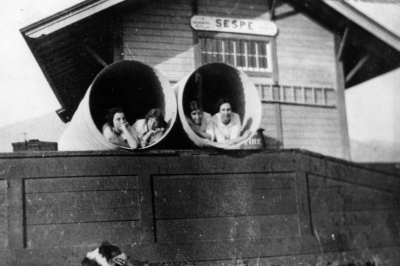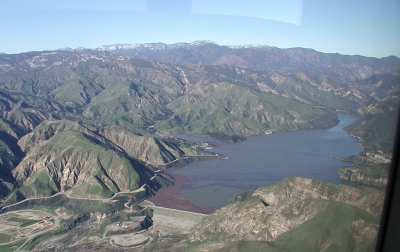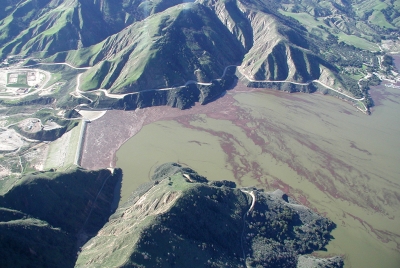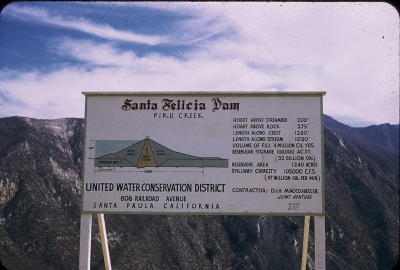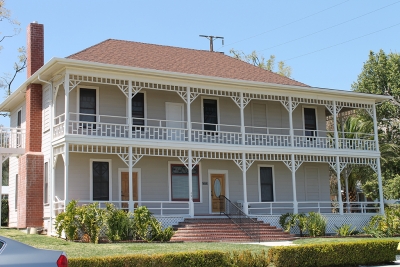|
By Cindy Blatt — Wednesday, August 18th, 2021
Courtesy Cindy Blatt, FHS Swim Coach Thank you to the FUSD Trustees, Administration and especially AD Kim Tafoya for all the hard work in getting an agreement that gives FHS aquatics full access to the Fillmore Aquatic Center. With no year-round youth swim team or water polo teams to feed the high school programs, it is important that our FHS student athletes are going to be able to have summer and pre-season access to the pool for conditioning and practice. We compete against schools who have many year round swimmers. This agreement will help our student athletes be more successful and competitive. We coaches will have more time to spend with beginning swimmers and even non-swimmers. Lastly, our student athletes are members of the Fillmore community and this is their pool too. I'm looking forward to a successful and fun FHS swim team season. |
|
By Gazette Staff Writers — Wednesday, August 18th, 2021
Dear Families of Sierra High School and Heritage Valley Independent Studies. It is an honor to be serving your student and family as the new Principal of Sierra High School, Heritage Valley Independent Studies, and Fillmore Adult School. My name is Amber Henrey and I am proud to say that I am originally from Fillmore and attended elementary schools here in the district. I have a great appreciation for this community. I have worked in the Fillmore Unified School District for 15 years serving as a Teacher, Coordinator, Assistant Principal, Director of Curriculum, and now Principal. I was drawn to this opportunity to work at these alternative schools because I want to be at a school that embraced a relationship-centric learning environment and allowed students a chance to succeed at a campus where the staff can really get to know each student. The staff has cultivated a true and lasting support system for our students and I am grateful to join their team. Also new to our staff is our counselor, Jacqueline Gonzalez. Mrs. Gonzales is joining us from Fillmore High School where she served as their intervention counselor. She has already met some of our students as the intervention counselor at Fillmore High School and as the Summer School counselor. She can be reached at jacqueline.gonzalez@fillmoreusd.org You can expect from us that we will get to know your student and will be supporting them to do their best. We want all of our students to all learn how to carry themselves as intelligent, thoughtful, and responsible young adults. We want them to be proud of their accomplishments. This year will be a fresh restart after a year and a half of learning during a pandemic. We are thrilled to have all students back on campus and in-person. This will be a great year! The first day of school is August 19th. More information about registration will be sent home during the week of August 9th. You can reach me at my email, ahenrey@fillmoreusd.org or through your child’s Team chat feature. Our office reopens on August 9th. If you have a pressing issue before you can leave me a message at 805-524-8201. Amber Henrey, |
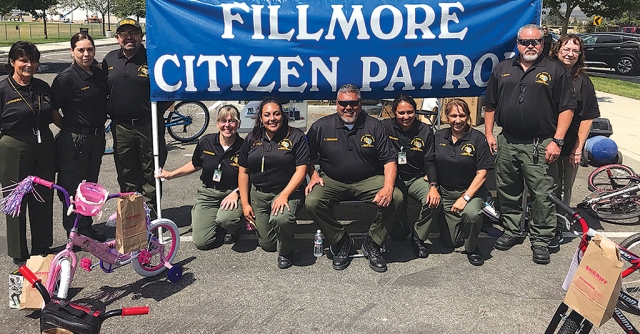 Come join the Fillmore Citizens Patrol! Above are members who helped at the 2019 Fillmore Bike Rodeo, which they participate in every year. Pictured are Jan O’Donnell, Isela Larin, German Cea, Lisa Hammond, Sandra Ponce, Ray Medrano, Lidia Arredondo, Annette Fox, Ron Smith, Laura Messina-Smith. Enlarge Photo By Gazette Staff Writers — Wednesday, August 18th, 2021
Fillmore Station is looking for volunteers to join the ranks of the Fillmore Citizen Patrol team. Citizen Patrol members are involved in a wide variety of activities in and around Fillmore. Members provide valuable support to the community by conducting patrols, assisting with community events such as the bike rodeo, annual toy giveaway, fireworks sales, and a variety of work details with station personnel. We are seeking people of all ages. If you’re currently working, have retired, or anywhere in between we can use your valued assistance. After a background check, members will get the opportunity to attend a Citizen Patrol Academy, which will train and answer any questions you might have. If interested, please contact one of the two Citizen Patrol Members listed below. Ray Medrano raymedrano@gmail.com Prepared by: Sergeant David Sparks |
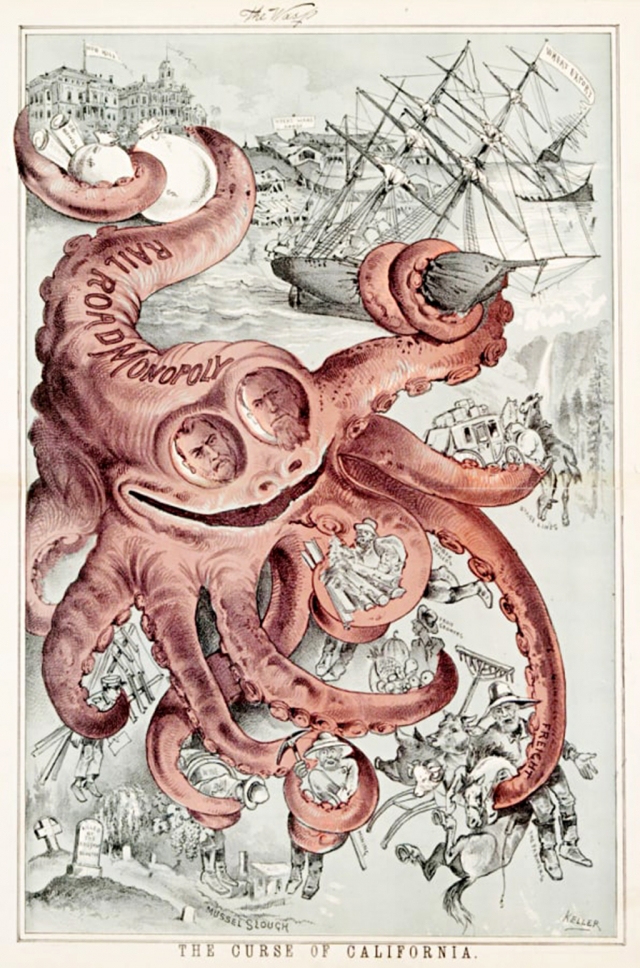 "The Octopus" by G. Frederick Keller in The Wasp, 1882, courtesy Bancroft Library, which portrayed controlling all aspects of the California Economy. Courtesy Fillmore Historical Museum. Enlarge Photo By Gazette Staff Writers — Wednesday, August 18th, 2021
 The Fillmore Depot in 1887, which is when the Southern Pacific Railroad came to the Santa Clara River Valley. Photos Courtesy Fillmore Historical Museum. Enlarge Photo Courtesy Fillmore Historical Museum The arrival of the Southern Pacific Railroad to the Santa Clara River Valley in 1887 changed the face of the valley forever. The Southern Pacific Railroad was founded in 1865 and was controlled by the “Big Four”: Mark Hopkins, Leland Stanford, Collis Huntington and Charles Crocker. They also owned the Central Pacific which met the Union Pacific at Promontory, Utah, in 1869 completing the transcontinental railroad. The Southern Pacific linked San Francisco to Los Angeles by rail through the Central Valley in September of 1876. By 1880, they had built track to Tucson, Arizona. Over the next decades, the Southern Pacific not only absorbed the Central Pacific Railroad but many other lines throughout the United States. Within California, the Southern Pacific and the “Big Four” become dominating factors in the economy and politics of the State. By 1882, the Southern Pacific was portrayed by G. Frederick Keller in The Wasp, as an octopus controlling all aspects of the California Economy. By 1886, the Southern Pacific was ready to build a coast route between Los Angeles and San Francisco. Their surveyors had already surveyed the area around Saugus and were familiar with the Santa Clara Valley. With no major rivers or mountains to cross, this was seen as a relatively easy route. Thomas Bard, a major landowner and businessman in Ventura County, wanted a different route. His route would have gone across the San Fernando Valley to Santa Susanna Pass and on to Hueneme. To accomplish this, tunnels would have to be dug through the Santa Susanna Mountains between current day Chatsworth and Simi Valley. In 1884 he had a surveyor stake out a route from Hueneme, through his ranch lands over the Santa Susanna Pass. This would have included a tunnel 4,000 feet in length. Bard proposed this route to the Southern Pacific, even offering inducements such as free right of way across his property. The route through the Santa Clara Valley was easier to do, which meant cheaper. Despite Southern Pacific having good engineering and financial reasons for choosing the Santa Clara Valley route, Bard became a sworn enemy of the company, eventually running against and beating the Southern Pacific candidate for a US Senate seat in 1900. Eventually in 1904, the Southern Pacific did build a line through the Santa Susanna Mountains with a 7,300-foot tunnel. This would become the primary route between Los Angeles and San Francisco. Prior to the railroad, property in the valley was owned by a few large ranchos such as Rancho Camulos, and the remains of Rancho Santa Paula y Saticoy and Rancho Sespe. The only towns in the valley were Santa Paula and Saticoy. The area was slowly being sold off in smaller parcels. When it became clear that the Southern Pacific would be coming through the area, several new town plans were laid out including Piru, Sespe, Bardsdale, and Fillmore. In 1881, Reginald del Valle of Rancho Camulos ran for Congress against Col Henry Harrison Markham, who was backed by the Southern Pacific. Not surprisingly del Valle lost the election and found himself in debt. To clear his debts, he sold the Temescal Land Grant in 1887 to David Cook of Chicago. Piru was the project of Cook who, after making his fortune as a printer of religious tracts, came to California for his health. He purchased property from the Del Valles of Rancho Camulos on which to build his “Garden of Eden”. With the death of T. Wallace More Rancho Sespe was divided among his heirs who quickly sold off the property. The eastern part of Rancho Sespe came into the possession of the Hull Family of Chicago. The Hulls along with Pacific Improvement Company, laid out the town Sespe. Bardsdale was laid out by Royce Surdam on property purchased from the More heirs by Thomas Bard. He may not have liked the Southern Pacific Railroad but could see the potential of owning property along its route. Bardsdale was based on the idea that the railroad route would be south of the Santa Clara River. The remaining portion of the More property was purchased by Sespe Land and Water Company and became the town of Fillmore. In August of 1886, work began in earnest on the railroad line between Saugus and Ventura, 53 miles. The route would have to cross the lesser fork of the Santa Clara River, Piru and Sespe Creeks and several lesser creeks. Eventually there would be ten steel bridges on the eastern 37 miles of the line. There would be several train stations along the route. The railroad had standard plans for the depots they built and they would vary with the size of the community. If there was not housing available for the staff, a two story structure would be built with accommodations upstairs. The first train station west of Saugus would be at Rancho Camulos. On December 2, 1886, the first locomotive reached Camulos. In 1888, David Cook appealed to Charles Crocker for a second station at Piru, which was refused. In response, Cook built his own train station and staffed it himself. The Southern Pacific originally wanted the next station to be at Cienega (near the current State Fish Hatchery) where Rush Ealy owned a stagecoach stop. Ealy refused to sell the property, so the Southern Pacific purchased right of way west of Cienega from the Sespe Land and Water Company who obligingly named their new town “Fillmore” after Jerome A. Fillmore who was then the general manager of the Southern Pacific “south of Oregon and west of El Paso. In January, 1887, the first train crossed the Sespe Bridge. Another depot was built at the planned town of Sespe, with stops later added for the brownstone quarry and the Spalding home at Rancho Sespe. After Sespe, Santa Paula would be the next actual depot. With the coming of the Southern Pacific came more settlers. The town of Sespe was never realized due to the growing town of Fillmore. The hope of a flourishing Bardsdale died when the railroad route went north of the Santa Clara River. David Cook returned to Chicago in 1900, Piru never became the “Second Garden of Eden” but is an unincorporated community today. |
 FUSD announced the school board’s decision to support the City’s Aquatic Center replastering project by agreeing to pay 50% of the cost as both share the facility. Pictured is the FHS swim team which uses the City pool to practice and compete. Enlarge Photo By Anonymous — Wednesday, August 11th, 2021
August 6, 2021 This is in addition to the $36,000 that the District currently pays for use of the facility when it is regularly closed by the City, mid-September through mid-May, or $4,500 per month for 8 months. During the District’s use time, the District provides its own custodial staff to clean the facilities and lifeguard supervision by our coaches. This fee was calculated based on the cost information provided by the City for utilities and maintenance supplies, such as chlorine. In return for FUSD’s annual payments of $126,345.46 per year the District is requesting: FUSD looks forward to completing this necessary maintenance project so that our students can continue to swim in our community, at the Fillmore Aquatic Center. |
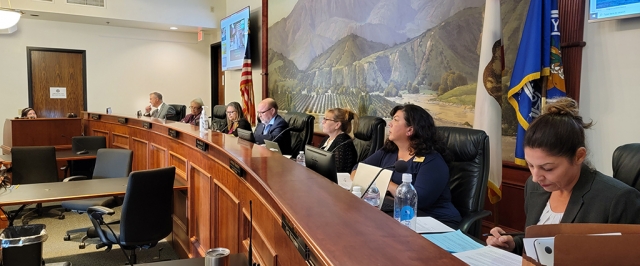 On Tuesday, August 10th at 6:30pm at Fillmore City Hall, for the first time since the COVID-19 lockdown, Fillmore City Council held a 2021 in-person meeting. Pictured is the City Council in attendance, (l-r) City Manager David Rowlands, Council Member Lynn Edmonds, Council Member Ari Larson, Fillmore Mayor Mark Austin, Council Member Dianne McCall, Council Member Christina Villasenor and City Attorney Tiffany Israel. Welcome back! Enlarge Photo By Anonymous — Wednesday, August 11th, 2021
Presentation - Green Business presentation. A presentation by the County of Ventura’s Green Business organization was given at Tuesday’s Council meeting. Managing this environmental outreach was Javier Saucedo. Mr. Saucedo explained the multi-faceted ability of Green Business to assist business owners with setting up ways to keep the environment clean and green. 9-C Council discussion of the Community Conversation Program and its Future. Extended discussion continues. 9-D Adoption Resolution No 21-3840 to impose lien to recover costs of replacing tree unlawfully removed by property owner. Fine paid and schedule agreed to for covering all additional costs to be paid in full within one year. 9-E one city council meeting a month until January 11, 2022. Agreed to unanimously. 9-F Allowing AYSO to rent fields at rate. Agreed, unanimously. 9-G Current license Agreement for COVID-19 testing kiosk on city property with 360 Clinic, Inc. Unanimously agreed. |
|
By Anonymous — Wednesday, August 11th, 2021
Dear Fillmore High School Families, Along with the teachers and staff, I will work hard to continue the legacy of success established at FHS by building strong relationships with parents, students and community partners. Returning to full time in-person learning will be both exciting and challenging for our community of learners. After three semesters of distance learning, we will all have some readjusting to being on campus. Because of this, we will be extending our orientation program to both freshman and sophomores to aid in the transition back to in-person learning. Orientation information will be sent in a letter along with our registration materials. All faculty and staff will be present on August 19th, the first day of class, and look forward to creating a welcoming environment for your student. Please check our website for community health related updates prior to the start of school. Over the past year, FHS has added several new programs and facility changes to support our students. The FHS Wellness Center has been opened and will provide a comfortable, safe space for students to take a break from everyday stressors, access resources and get connected to different services for mental health and overall wellbeing. We also have two new CTE buildings that will be completed this fall. These spaces will support our established programs as well as provide the opportunity to add new programs. There has also been a refresh on campus of student areas such as the library, classrooms and some of our outside spaces. Students, upon their return, will be pleasantly surprised in the welcoming environment on campus. I look forward to meeting and getting to know each and every one of you in the fall. Go Flashes! Sincerely, |
|
By Anonymous — Wednesday, August 11th, 2021
A 28-year-old Carpinteria woman was arrested for stealing mail, burglary, forgery, and cashing the victim’s stolen checks. On July 6, 2021, deputies responded to an identity theft call in the 2000 Block of Grimes Canyon Road. The victim reported to have had been alerted by his financial institution with regards to three personal checks that had been cashed by an unknown payee named Briana Gutierrez. The victim further reported to have placed these checks in his mailbox and he did not know anyone by the name of Briana Gutierrez, nor were the checks originally written out to Gutierrez. Three checks totaling $1,701.89 had been stolen, forged, and cashed. The Fillmore Detective Bureau quickly followed up with this case and conducted their investigation. They were able to positively identify the suspect as Briana Gutierrez, a resident of Carpinteria who has a history of criminal theft crimes. On August 4, 2021, Fillmore Detectives contacted and arrested Gutierrez in the city of Carpinteria. Gutierrez was taken into custody for several felonies. She was subsequently booked into custody at the Pre-Trial Detention Facility for Identity Theft, Possession of Stolen Property, Forgery, and Burglary. Gutierrez’s bail was set at $70,000. She posted bail with a pending court date. Anyone with information pertaining to crimes of this nature involving Gutierrez is urged to contact Detective Pewsey at the below listed number. Gutierrez may be implicated in additional check fraud crimes with other victims. The reporting party may remain anonymous. The Fillmore Police Department encourages citizens to immediately report suspicious people and vehicles, and to promptly report any crime they come across by calling 911. The Ventura County Sheriff’s Office would like to thank members of the public for their on-going support and due diligence in providing information to assist our agency in solving crimes. We are better at what we do because of our community partnerships. Join us in the fight on crime by following us on Twitter @VENTURASHERIFF, Facebook, Instagram @ VCSHERIFF, and with Nixle by texting your zip code to 888777 to receive local law enforcement and public safety alerts and advisories. The Ventura County Sheriff’s Office would also like to remind citizens to be aware of loose mail placed in unlocked mailboxes and theft of mail left in unlocked mailboxes for extended time periods. Please remember that Postal Inspectors across the country work hard to protect your mail. But with deliveries to more than 100 million addresses, the Postal Inspection Service can't do the job alone. You can protect your mail from thieves by remembering to pick up your mail promptly after delivery. Don’t leave it in your mailbox overnight. If you're expecting checks, credit cards, or other negotiable items, ask a trusted friend or neighbor to pick up your mail. This diligence will assist in the prevention of becoming a victim of identity theft. If you see or suspect a mail thief at work, or if you believe your mail was stolen, call police immediately 9-1-1, then call Postal Inspectors at 877-876-2455 and (press 3) or visit the below link. https://postalinspectors.uspis.gov/investigations/mailfraud/fraudschemes... Nature of Incident: Suspect arrested for Identity Theft, Forgery, Possession of Stolen Mail, and Burglary Ventura County Crime Stoppers will pay up to $1,000 reward for information, which leads to the arrest and criminal complaint against the person(s) responsible for this crime. The caller may remain anonymous. The call is not recorded. Call Crime Stoppers at 800-222-TIPS (8477). |
|
By Anonymous — Wednesday, August 11th, 2021
 Fillmore’s abandoned Burger King building in the Vons Shopping Center has construction underway. Crews were gutting the building this past week, with fences up while it is under construction. What’s coming to Fillmore? Rumors are a Wingstop and Jamba Juice to share the building. Enlarge Photo |
|
By Anonymous — Wednesday, August 11th, 2021
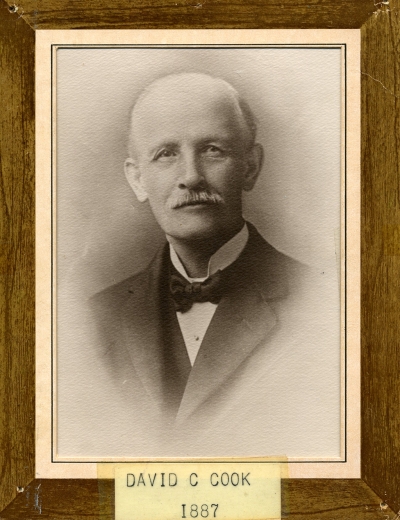 The Piru Mansion was built by David C. Cook in 1888, he also built the Piru City Hotel, later known as the Round Rock Hotel. He also purchased 14,000 acres of the Piru Canyon from Señora Del Valle, of Rancho Camulos. Enlarge Photo 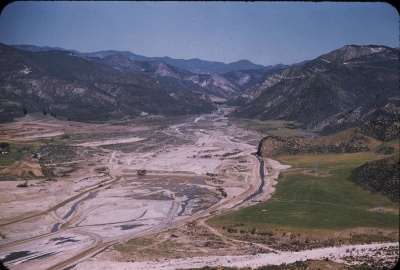 The dam, Santa Felicia Dam, on Piru Creek has been owned and operated by the United Water Conservation District since it was constructed in 1955, pictured above is that Reservoir area. Enlarge Photo Courtesy Fillmore Historical Museum What do we know of Piru Canyon and Lake Piru? Check the Piru Lake website for photos of water skiing, fishing, camping and more at Lake Piru Recreation Area. But what of its history? The dam and lake sit within the Los Padres National Forest in the Topatopa Mountains of Ventura County. The dam, Santa Felicia Dam, on Piru Creek has been owned and operated by the United Water Conservation District since it was constructed in 1955. But what came before? The canyon where the dam and lake are located was primarily connected in the early history of the 20thCentury with Juan Fustero and his family. He was descended from the Shoshones and by extension to the Hopi and Aztec people. His people migrated seasonally and often connected with the coastal Chumash and tended to adopt their customs. This is how the family came to Piru Canyon. The name Piru is a shortened form of the original Pi’idhuku, the name of a reed used to make baskets. Juan and his family lived far up the canyon in Temescal Canyon. He had come by his last name during a court legal action. When the presiding judge asked for his last name he replied that he had no last name. The judge then asked what his family did for a living. They had been makers of the wood framework for saddles or “saddle trees” called fustos in Spanish. So the judge gave him the last name of Fustero “he who makes saddle trees.” In 1880, an early elementary school was built in the canyon about where the dam is today. Juan’s five daughters and three sons most likely were educated there. Three of the five daughters ultimately died of measles and were buried somewhere on the Fustero Ranch. Juan’s father and Juan himself were also buried in the same area of the ranch, an area which is now underwater. We have been told that there is a plaque up canyon honoring their burial place but have no photo of it. Piru Canyon at one time was destined to be “Another Eden,” at least in the mind of David C. Cook who purchased 14,000 acres of the canyon in 1886 from Señora Del Valle, of Rancho Camulos. Cook, a devout Christian, had made a fortune publishing religious tracts in Elgin, Illinois. His health was failing and he had determined to come west to a milder climate. His second “Garden of Eden” would include 400 acres of oranges, 300 of apricots, 200 of English Walnuts, as well as figs, grapes, chestnuts, almonds, pomegranates, persimmons and olive trees. When the Southern Pacific railroad tracks were laid through the valley in 1887 Cook built his own depot. Once he was well established, his wife and two sons were brought to Piru. He built the Piru City Hotel, known later as the Round Rock hotel from the huge round rock located in the front yard, and the Piru Mansion In 1888.With his plantings producing well, he platted out the city of Piru and donated land for the building of a Methodist Episcopal Church. Cook saw to it that eight miles or roads and 12 miles of irrigation ditches were built, intending to turn the canyon into a self-sufficient farm. As his health improved he began to make trips back to Illinois. An astute businessman, he watched the development of the local oil industry. On his next trip to Illinois in 1899, with his health returned, he made arrangements to sell his property for oil development to the Piru Oil and Land Company. He had made a profit of $433,000 on a 13 year land investment. Cook moved back to Illinois after selling his property in Piru, dying in 1927. His mansion remains, having been restored many years ago after a disastrous fire, and is today in use as a wedding venue. The Round Rock Hotel is still there but no longer receives guests. All that remains of “Another Eden” are a few olive trees on the way to the dam. Santa Felicia Dam was constructed in 1955 in Piru Canyon and has become a popular recreational location drawing people from our local valley as well as surrounding counties. Today, because of the drought, the lake is as low as it has been in decades. The 3” of rain we received locally in 2020-21 was not enough to keep the lake filled. It was built to hold winter rainfall from the surrounding mountains and then release the water in summer to refill naturally occurring underground basins beneath the Santa Clara River. Local farmers and local cities retrieve the water with deep water wells to supply the people in town and farmers’ orchards and row crops. You may not see the water in the river unless it has been raining, but it is there, underground. Many local residents remember the extremely wet year of 2005. Piru Lake was filled to the brim and spilling over the spillway. The effects on the residents of Piru, Fillmore, and Bardsdale were dramatic. Water filled the Santa Clara River from bank to bank, surrounded the equestrian center and threatened to wash away the south approach of the Bardsdale Bridge. Land was washed away on the south and north side of the river greatly impacting agricultural operations. Rain years begin each year on October 1 and end on September 30. This doesn’t mean that rain will show up on October 1 but we hope that this year will provide the rain we need. In the meantime we use our water carefully and look forward with hope for a wet winter. |






